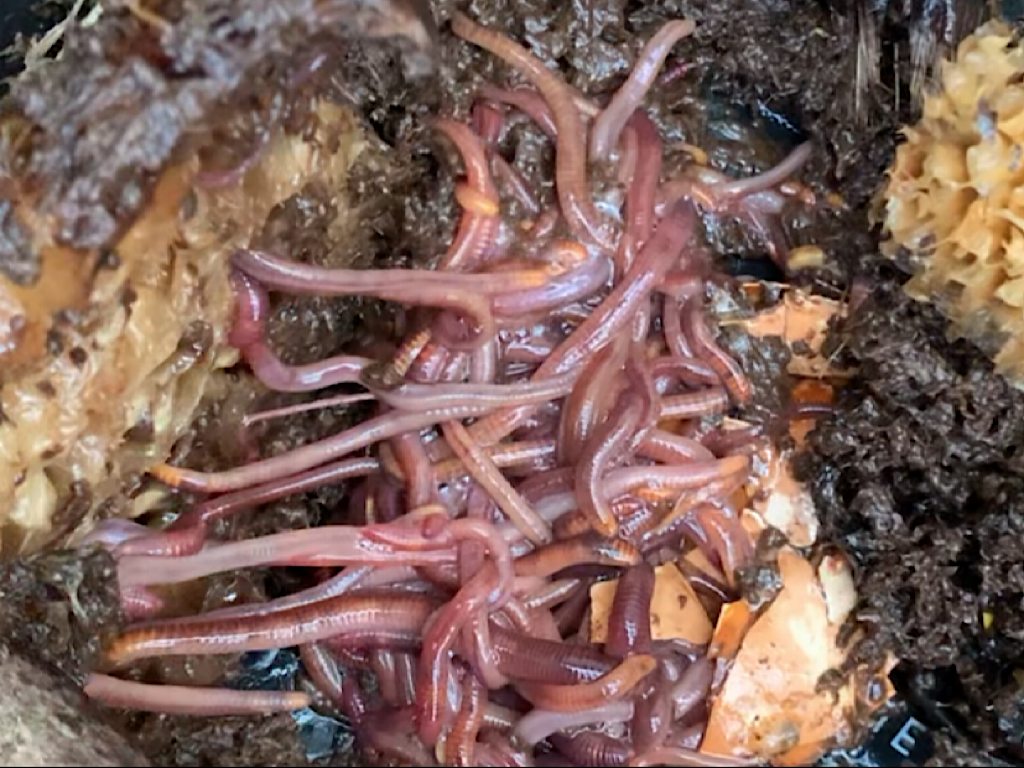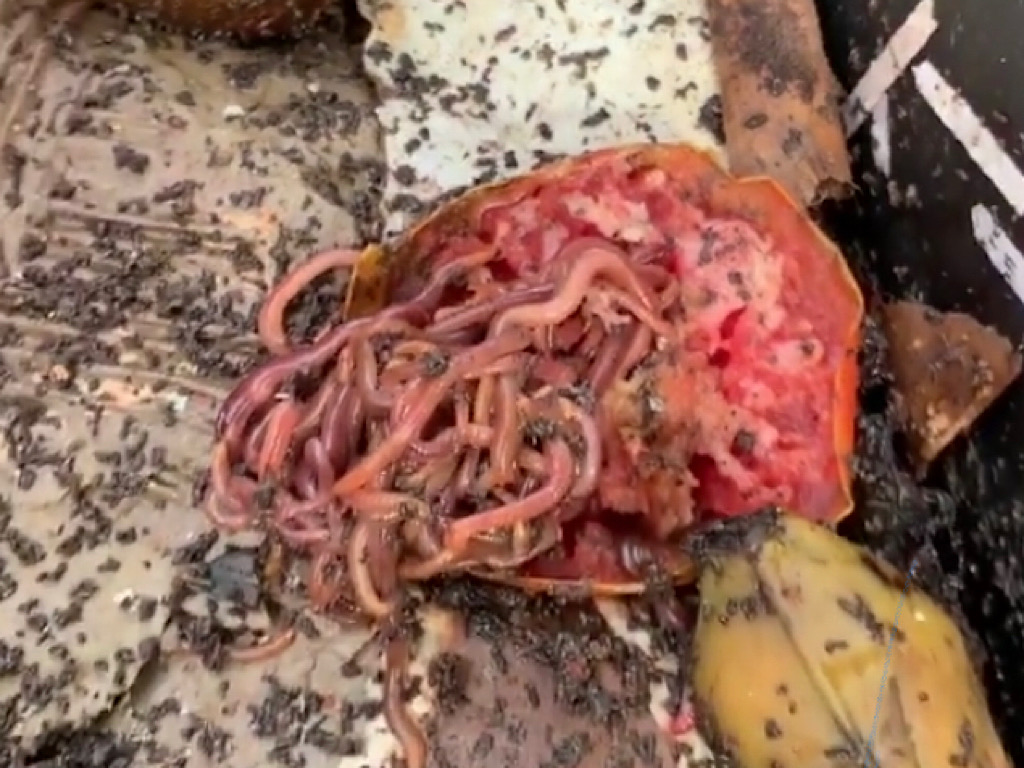Composting worms tend to do best in temperatures around 15 – 24 degrees celsius ( 59 F – 75.2 F). So, how do we keep a worm farm population happy and healthy when the weather outside varies a lot from season to season? This article will look at some ways to help your worms through the cold of winter.
There are many varying types of weather conditions that winter can bring, depending on where you are in the world, ranging from ice, snow, frost, heavy rain, cold air, dry air and high wind conditions (just to name a few!) Some places experience extreme winter weather while others are more mild.
If you live in an area where it snows, or you get frost and ice, it is best to move your worm farm inside during winter. I recommend finding a spot that is out of the way, such as a garage, shed or laundry. If you leave your worm farm outside in during snow or frost, the contents (including the worms) will most likely freeze. If moving your whole worm farm inside is not an option due to space restrictions, you can always make a smaller, temporary worm farm. Consider it a winter holiday house for your worms! To make a small, temporary worm farm, first find a (preferably dark) space to put it. You might have a shelf in the garage, the shed, laundry or even a cupboard. You can pretty much use any kind of container, foam box or tub to house the worms. Just make sure it has air holes in the top. Line the base of the container with thick layers of newspaper. This will help stop the bottom of the tub getting sludgy because unlike a regular worm farm, the temporary winter housing will not have drainage holes. Next add plenty of bedding material. Ripped up cardboard is perfect for this and don’t be afraid to use lots. Once again, the idea is to keep the farm moist, but not soaking wet. The cardboard will help soak up any excess moisture in the farm and help keep conditions just right. The next step is to go and get your worms out of your regular farm, ready for their temporary winter holiday! From experience, I have found worms love certain foods such as rotting down tomato, pineapple, avocado, corn and apple cores. From experience, I have noticed they tend to “ball” around these foods in masses.
At least a week before you want to catch your worms, I recommend putting some of these foods in your worm farm. The idea is to attract the worms to their favourite food. Once you notice a big clump of worms, scoop them up with a little garden spade and put them into the temporary container. You can pick worms out by hand, one by one if you like, but this can be quite time consuming. Another alternative is to harvest worm castings for use in the garden and rather than putting the worms back into the worm farm, place them into their winter housing. For tips on harvesting worm castings see this link: https://www.gardeningwithangus.com.au//harvesting-worm-castings/
When getting worms out of your regular farm for the winter, it is entirely up to you as to how many worms you want to temporarily house indoors. If you only want to bring in a small number (for example around 100-200 worms), once winter is over and you put them back into their regular outdoor farm, just be mindful not to feed overfeed them while the population rebuilds. While your worms are in their temporary smaller winter container/tub, it can be a good idea to cut or blend the kitchen scraps you are feeding them and be sure to add carbon rich material also. A good guide is approximately 50:50 (equal portions of kitchen scraps and carbon rich materials). Keep the temporary farm moist, but not wet. If you over water your temporary worm farm, it can collect in the bottom, causing an undesirable environment and some worms could even drown. If you have an old cotton towel or t-shirt, dampen it down and use it as a worm blanket. This can help keep the right moisture content within the farm and give the worms a nice damp place to dwell and lay their eggs. Only feed your worms in this temporary housing when they have almost finished their last feed. The temporary worm farm will be inside and overfeeding can cause bad odours and attract unwanted pests. Once winter is over, the contents of the temporary farm can be put back into the outdoor worm farm.
If you live in an mild area that does not get frost, ice or snow during winter, it may not be necessary for you to bring your worm farm or part of your worm population inside. If your worm farm is in a shady position, it can be very helpful to move it into a more sunny spot. When doing this though, be sure to exercise common sense and caution as not to overheat the worms with too much sun. This is very applicable to those living in tropical and sub-tropical areas. You do not want your worm farm getting too far over the 25 degrees celsius mark.
Another thing you can do to help protect your worms from the cold is to provide them with extra bedding materials in the top layer of the worm farm. Bedding material can be any biodegradable matter that is water absorbent and high in carbon. Things like shredded newspaper, ripped up cardboard, egg cartons or straw work well, or alternatively you can purchase a coir worm farm farm bedding block. Place the extra bedding inside the top layer of the worm farm at least 35cm thick on all edges and on the top (under the worm blanket). This will provide insulation and trap the warmth generated by the composting process, which in turn will keep your worms comfortable and productive eating your kitchen scraps.
Composting worms are generally less active during winter, so don’t panic if you open up your worm farm and see things are a bit slow in there. If you do notice your worms slowing down, start feeding them less. If you overfeed your worms and there are more scraps than the worms can handle for too long, then you might start to notice strong odours and/or fruit fly in and around your farm. If your worm farm does become smelly, reduce the amount you are feeding them until the weather warms up, and you notice they are more productive.
For Summer time worm farm care: https://www.gardeningwithangus.com.au//how-to-keep-your-worm-farm-cool-in-summer/




